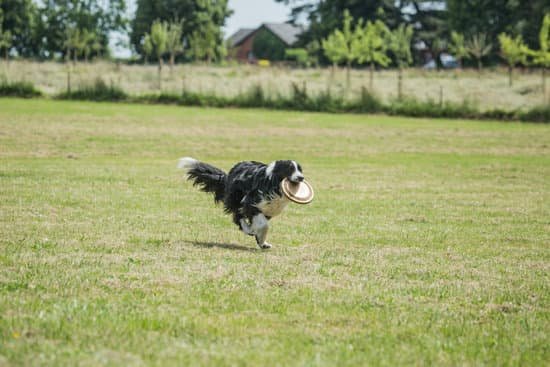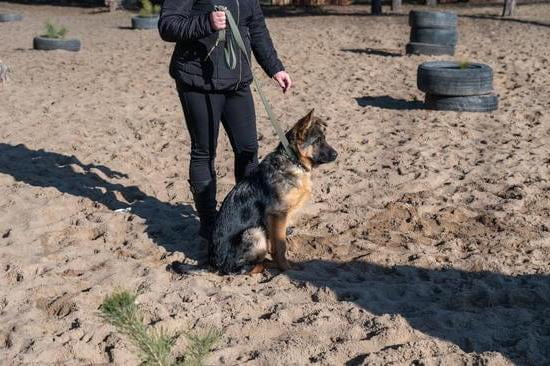Electric fences can be a highly effective tool for training your dog and keeping them safe within the boundaries of your property. By providing a clear boundary and discouraging your dog from straying, electric fences offer peace of mind for pet owners while allowing their dogs the freedom to roam and explore. This article will guide you through the process of training your dog on an electric fence, from choosing the right system to troubleshooting common challenges.
The purpose of an electric fence for dog training is twofold: to keep your dog contained within a specific area and to teach them to understand and respect boundaries. Unlike traditional fences, electric fences are invisible and consist of a buried wire connected to a control unit. When your dog approaches or crosses the boundary, they receive a mild static correction through their collar, which signals them to retreat back into the safe zone.
One of the key benefits of using an electric fence for dog training is that it allows your furry friend the freedom to explore beyond the confines of a physical fence while still ensuring their safety. It also eliminates unsightly barriers that may obstruct views and can be more cost-effective compared to installing traditional fencing materials. Additionally, by teaching dogs boundaries through positive reinforcement rather than punishment, electric fence training promotes better behavior overall.
In the next sections, we will delve into the specifics of how to choose the right system for your dog’s needs, how to prepare them for training, and how to properly introduce them to the concept of an electric fence. We will also provide tips and tricks for setting up the fence correctly, as well as techniques for both initial training and advanced training.
Finally, we will discuss important maintenance considerations and leave you with some final thoughts on achieving success in electric fence training through patience, consistency, and positive reinforcement methods.
The Basics
Choosing the right electric fence system for your dog is essential to ensure that it effectively meets your dog’s training needs. With a wide array of options available in the market, it can be overwhelming to determine which system is best suited for your furry friend. However, by considering a few key factors, you can make an informed decision and set your dog up for successful training on the electric fence.
Dog’s Size and Breed
One of the first factors to consider when choosing an electric fence system is your dog’s size and breed. Different breeds have different temperaments and energy levels, which may require varying levels of correction or containment. For instance, a smaller dog may need a milder correction level compared to a larger, more energetic breed.
Take into account your dog’s physical abilities as well – some systems are specifically designed for burrowing dogs or those who are excellent jumpers. By considering these factors, you can select a system that is tailored to meet your dog’s specific needs.
Training Goals
Another important consideration when selecting an electric fence system is understanding your training goals. Are you looking to prevent digging, jumping over fences, or wandering off? Each goal may require different features from the electric fence system.
Some systems offer customizable boundaries that can be easily adjusted depending on your specific requirements. Additionally, if you plan on expanding your pet family in the future, opting for a system that allows additional collars to be added will save you time and money down the line.
Budget and Longevity
Lastly, it’s crucial to consider your budget and the longevity of the electric fence system. While it may be tempting to opt for cheaper options initially, investing in a quality system will save you from potential headaches and costly replacements in the long run.
Consider factors such as warranty duration and reliability of customer support when making your decision. It’s also worth checking if the system offers any additional features or accessories that may enhance your dog’s training experience.
By keeping these basics in mind, you can confidently choose an electric fence system that aligns with your dog’s needs and sets the foundation for successful training. Remember to thoroughly research different brands and models, read customer reviews, and consult with professionals if needed. With the right system in place, you’re one step closer to effectively training your dog on an electric fence.
Preparing Your Dog for Training
Before starting the training process, it is important to ensure that your dog is ready and prepared. By following a step-by-step guide, you can help set the foundation for a successful electric fence training experience.
- Schedule a Veterinary Check-up: Prior to beginning any training program, it is crucial to ensure that your dog is healthy and in good condition. Schedule a visit with your veterinarian to make sure your dog is up-to-date on vaccinations and free from any medical conditions that may hinder their ability to participate in the training.
- Assess Behavioral and Temperamental Traits: Understanding your dog’s personality traits will assist you in tailoring the training methods effectively. If your dog tends to be more sensitive or reactive, you may need to adjust the training approach accordingly.
- Implement Basic Obedience Training: Before introducing your dog to the concept of an electric fence, establish a solid foundation of basic obedience commands such as sit, stay, and come. This will not only enhance communication with your furry friend but also facilitate their understanding of boundaries during electric fence training.
- Introduce Your Dog to Leash Walking: Familiarize your dog with walking on a leash if they are not already accustomed to it. This will ensure better control during initial interactions with the electric fence system and promote safety throughout the training process.
- Gradually Introduce New Environments: Expose your dog gradually to different environments and stimuli as part of their socialization process. This will help them become more adaptable and less anxious when encountering new situations near the electric fence boundary.
By taking these steps before starting electric fence training, you are setting yourself and your furry companion up for success. Ensuring that both physical health and behavioral readiness are addressed will contribute greatly to a positive training experience.
Familiarizing Your Dog with the Electric Fence
Introducing your dog to the concept of an electric fence is an important step in their training journey. To ensure a smooth and successful transition, it is crucial to help them understand what the electric fence is and how it works. This section will provide you with some tips and techniques to familiarize your dog with the electric fence.
Firstly, it is recommended to have your dog on a leash during this initial introduction phase. Begin by walking your dog around the perimeter of the electric fence system while holding the leash firmly. Allow them to explore and sniff the boundary flags, which are usually placed at regular intervals along the fence line. By associating these flags with boundaries, your dog will start understanding where they can go and where they cannot.
Another effective method for introducing your dog to the electric fence concept is using verbal cues or commands. As you walk your dog near the boundary flags, use a command like “Stop” or “No” whenever they approach too close. Simultaneously, gently pull back on their leash to guide them away from the flags. Consistently repeating this approach will help reinforce that they should not cross those boundaries.
| Training Technique | Description |
|---|---|
| Walk Around Perimeter | Walk your dog around the perimeter of the electric fence system while holding them on a leash. |
| Boundary Flags | Show and explain boundary flags to your dog, associating them with set boundaries. |
| Verbal Cues/Commands | Use commands like “Stop” or “No” when your dog approaches the boundary flags, and gently guide them away. |
Setting Up the Electric Fence Properly
One of the key factors in successfully training your dog on an electric fence is setting it up properly. This section will provide you with some tips and tricks to ensure that your electric fence is set up correctly for optimal training.
Choose the Right Location
When choosing a location for your electric fence, it is important to consider several factors. First, make sure that the area you choose is large enough for your dog to have plenty of room to roam and play. It should also be free from any potential hazards or obstacles that could cause injury to your dog.
Additionally, it is crucial to take into account the surrounding environment. Make sure there are no objects or structures near the fence that could interfere with its effectiveness, such as metal or dense vegetation. Also, be mindful of underground utilities and call 811 or your local utility company to mark them before digging any holes for posts.
Properly Install Fence Posts and Wires
Correct installation of fence posts and wires is essential for ensuring that your electric fence operates effectively. Start by placing sturdy posts at regular intervals along the perimeter of your designated area. These posts should be securely anchored into the ground and positioned at a height appropriate for deterring your specific breed and size of dog.
Next, attach the insulated wires to the fence posts, ensuring they are taut and parallel to the ground. The number of wires needed will depend on your specific system’s instructions, but typically three to four wires are used for optimal coverage.
Test Your System
Before allowing your dog to interact with the electric fence, it is essential to thoroughly test the system. Use a voltage tester specifically designed for electric fences and apply it to each wire at various points along the perimeter. Verify that there is a consistent charge throughout all sections of the fence.
It is also crucial to regularly check your electric fence after installation and make any necessary adjustments. Ensuring that each wire is properly tensioned and the system components are functioning correctly will help maintain a safe and effective electric fence.
By following these tips and tricks, you can set up your electric fence properly, creating an ideal training environment for your dog. The next section will explore initial training techniques, which will help you teach your dog how to react appropriately to the electric fence stimuli.
Initial Training Techniques
Choosing the Right Training Collar
One of the most important aspects of training your dog on an electric fence is choosing the right training collar. There are different types to choose from, including static correction collars, vibration collars, and tone-only collars. Each type has its own pros and cons, so it’s crucial to consider your dog’s temperament and sensitivity levels before making a decision.
Static correction collars emit a mild electric shock when the dog crosses the boundary, while vibration collars provide a gentle vibration as a deterrent. Tone-only collars emit a high-pitched beep or sound that serves as a warning signal. It’s essential to select the training collar that is most appropriate for your dog’s unique needs and behavior.
Establishing Boundaries and Markers
Before starting the initial training sessions, it’s crucial to establish clear boundaries and markers for your dog. Begin by setting up physical markers such as flags or cones along the boundaries of the electric fence. These visual indicators will help your dog understand where they can and cannot go.
Additionally, it’s important to create auditory cues to reinforce those boundaries. This can be done by pairing the markers with verbal commands such as “stay” or “no.” The consistency between these commands and markers will help your dog make clear associations between their actions and the resulting consequences.
Gradual Introduction to Static Correction
During the initial training stages, it’s important to gradually introduce your dog to static corrections from the electric fence system. Start by having your dog wear their training collar without activating it for a few days. This allows them to grow accustomed to wearing it comfortably.
Once they become comfortable with wearing their collar, you can proceed with introducing them to static corrections in a controlled environment. Begin by slowly walking towards the boundary with your dog on a leash, allowing them to approach but not cross the boundary. If they attempt to cross, activate the collar’s static correction at its lowest setting. This will help your dog associate crossing the boundary with discomfort.
It’s crucial to keep training sessions short and positive, using treats and praise as rewards for desirable behavior. Consistency and patience are key during this stage, as it may take some time for your dog to fully understand and react appropriately to the electric fence system.
Gradual Acclimation
Once you have introduced your dog to the concept of the electric fence, it is essential to help them build confidence and trust in the system. Gradual acclimation is key to ensuring that your dog understands the boundaries and feels comfortable within them. In this section, we will explore some techniques and strategies to help your dog gradually acclimate to the electric fence.
One crucial aspect of gradual acclimation is allowing your dog to explore the designated area while closely monitoring their behavior. Start by supervising your dog’s activities in the enclosed space, providing positive reinforcement when they stay within the boundaries. This can be achieved through treats, praises, or affectionate gestures whenever they exhibit appropriate behavior.
Additionally, you can gradually increase distractions for your dog while they are within the boundaries of the electric fence. Start with mild distractions such as toys or mild noises and reward your dog for ignoring them and staying within the safe zone. Over time, introduce more challenging distractions such as other animals or enticing scents, ensuring that your dog remains under control and does not attempt to cross the boundaries.
To keep track of your dog’s progress during gradual acclimation, consider keeping a training diary where you record their behavior and any notable achievements or challenges encountered along the way. This can provide valuable insights into their development and assist you in tailoring future training sessions accordingly.
| Technique | Description |
|---|---|
| Supervised Exploration | Allowing your dog to explore within the boundaries while closely monitoring their behavior. |
| Positive Reinforcement | Rewarding your dog with treats, praises, or affectionate gestures when they exhibit appropriate behavior. |
| Increasing Distractions | Gradually introducing more challenging distractions within the boundaries to test your dog’s response and control. |
| Training Diary | Keeping a record of your dog’s progress, achievements, and challenges encountered during gradual acclimation. |
By following these techniques and strategies, you can help your dog develop confidence and trust in the electric fence system. Remember to always prioritize their well-being and ensure that training sessions are conducted in a positive and supportive environment. Gradual acclimation is a crucial step towards successfully training your dog on an electric fence.
Troubleshooting Common Challenges
Training your dog on an electric fence can sometimes present unique challenges. Understanding common obstacles and knowing how to overcome them will help ensure a successful training process.
- Distractions: Dogs may be easily distracted by various stimuli, such as other animals, people, or sounds. When your dog encounters distractions near the electric fence, they may be tempted to ignore the warning and cross the boundary. To address this challenge, gradually introduce distractions during training sessions once your dog becomes comfortable with the electric fence. Start with mild distractions and gradually increase their intensity over time.
- Fear or Anxiety: Some dogs may exhibit fear or anxiety towards the electric fence. This could be due to previous negative experiences or a general fear of new things. If your dog shows signs of fear or anxiety during training, it’s essential to remain calm and patient. Use positive reinforcement techniques and rewards to help your dog associate the fence with positive experiences. Gradually increase their exposure to the fence while providing comfort and reassurance.
- Stubbornness: Dogs with strong-willed personalities may present a challenge during electric fence training. They might test boundaries repeatedly or refuse to recognize the warning signals from the system. In these cases, it’s crucial to stay consistent and firm in your approach. Reinforce the training techniques consistently and use additional visual cues, such as flags or markers, to mark the boundaries clearly for your stubborn dog.
- Unpredictable Behaviors: Occasionally, dogs display unpredictable behaviors during electric fence training that are not related to fear or stubbornness. This could include behaviors like digging under the boundary line or climbing over it. To address these challenges, you may need to modify your physical setup by reinforcing any weak areas along the perimeter and adjusting wire placement accordingly.
Remember that each dog is unique, and some troubleshooting methods may work better for one dog than another. It’s essential to observe your dog closely and adapt your training techniques accordingly. Seeking professional guidance from a dog trainer or behaviorist can also be beneficial if you encounter significant challenges during the electric fence training process. By addressing and overcoming these common obstacles, you can ensure that your dog fully understands and respects the boundaries of the electric fence system.
Maintaining a Safe Environment
Once you have successfully trained your dog on an electric fence, it is crucial to maintain a safe environment for both your pet and the surrounding area. Regular check-ups and maintenance are essential to ensure that the electric fence continues to function properly and effectively. Here are some tips to help you maintain a safe environment for your dog:
- Conduct regular inspections: Schedule routine inspections of the electric fence system to identify any signs of damage or wear. Inspect the wires, transmitter, and receiver collar for any frayed or broken parts. Additionally, check the grounding system and make sure it is properly installed.
- Test the system regularly: Testing the electric fence system periodically will help ensure its functionality. Use a tester specifically designed for electric fences to verify that the voltage levels are within the recommended range.
- Keep vegetation under control: Overgrown vegetation can interfere with the proper functioning of an electric fence system. Trim any plants, shrubs, or trees that may be touching or getting close to the wires. This will prevent any potential disruptions in electrical flow and maintain effective boundaries.
- Monitor battery life: If your electric fence system operates on batteries, monitor their life regularly. Replace batteries as necessary to prevent any interruptions in power supply, which could compromise your dog’s safety.
- Educate family members and visitors: It’s important to educate everyone who interacts with your dog about the presence of an electric fence on your property. Make sure they understand how it works and emphasize that it is not a conventional physical barrier like a traditional fence.
By following these maintenance tips, you can ensure that your dog remains safely contained within designated areas while having unrestricted access to his outdoor space. Regular check-ups and consistent upkeep will prolong the lifespan of your electric fence system while providing peace of mind for both you and your furry companion.
- Conduct regular inspections
- Test the system regularly
- Keep vegetation under control
- Monitor battery life
- Educate family members and visitors
Advanced Training Techniques
Once your dog has become familiar and comfortable with the basic training techniques for an electric fence, it may be time to take their training to the next level. This section will explore advanced training techniques that can help enhance your dog’s understanding and response to the electric fence system.
One advanced technique is incorporating distractions into your dog’s training. This involves creating controlled scenarios where tempting distractions, such as toys or treats, are placed near the boundary of the electric fence. Start by enticing your dog with these distractions from a safe distance away from the fence.
As they approach the boundary, activate the electric stimulation to reinforce their recognition of the fence limit. Over time, gradually decrease the distance between your dog and the distractions until they are able to resist without crossing the boundary.
Another advanced training technique is implementing off-leash training sessions within a securely fenced area. Begin by removing your dog’s leash while inside a designated enclosed space where there is no risk of them escaping. Use verbal cues and hand signals to guide your dog towards understanding that boundaries are still present, even without a physical barrier like a leash.
If your dog attempts to cross over the fence line, use verbal commands paired with an appropriate level of stimulation to discourage them from doing so. Reinforce good behavior by rewarding them with praise or treats when they stay within their designated area.
Additionally, utilizing visual markers can be beneficial in reinforcing your dog’s understanding of where exactly the limits of their containment area lie. Place flags or other highly visible markers along the perimeter of the electric fence line to serve as clear visual indicators for both you and your dog. During training sessions, guide your dog around these markers while practicing commands and maintaining focus on remaining within their boundaries.
By implementing these advanced training techniques, you can further enhance your dog’s awareness and responsiveness to an electric fence system. Remember to always prioritize positive reinforcement and patience throughout this process, acknowledging that each individual canine may respond differently and require varying amounts of time to assimilate the new training techniques. With consistency and dedication, you can help your dog reach the point of confidently respecting the electric fence boundaries.
Final Thoughts
In conclusion, training your dog on an electric fence requires patience, consistency, and positive reinforcement. It is crucial to understand the purpose and benefits of electric fences for dog training before starting the process. By choosing the right electric fence system for your dog’s needs and preparing them adequately, you can ensure a successful training journey.
Familiarizing your dog with the concept of an electric fence is essential. Take time to introduce them to the boundaries and help them understand how it works. Setting up the electric fence properly is also vital for optimal training. Consider following tips and tricks to ensure that your dog understands their limitations.
During the initial training, use techniques that encourage your dog to react appropriately when encountering the electric fence. Gradual acclimation is necessary to build their confidence and trust in staying within boundaries. Remember that troubleshooting common challenges will be part of the process, so be prepared to overcome obstacles along the way.
Maintaining a safe environment for your dog is crucial even after completing their initial training. Regular check-ups and maintenance of the electric fence system are important to ensure its effectiveness. Finally, consider advanced training techniques when you feel like taking your dog’s electric fence training to another level.
In summary, success in training your dog on an electric fence lies in being patient, consistent, and using positive reinforcement methods throughout the process. By understanding each step outlined in this guide and implementing them effectively, you can create a safe environment where your dog learns to respect boundaries while enjoying freedom within them. With dedication and proper techniques, you can achieve long-term success in electric fence training for your beloved pet.
Frequently Asked Questions
How long does it take to train a dog on an electric fence?
The time it takes to train a dog on an electric fence can vary depending on the individual dog and the training methods used. Generally, it is recommended to dedicate at least two weeks for the training process. This allows for the dog to understand and become accustomed to the boundaries set by the electric fence.
Initially, introductions to the fence should be done gradually, using positive reinforcement techniques such as treats and praise. Over time, with consistent training sessions and clear boundaries, most dogs can learn to respect the electric fence within this timeframe.
How long does it take to train dog on invisible fence?
Training a dog on an invisible fence also requires patience and consistency. Invisible fences work similarly to electric fences but use a radio signal instead of physical barriers.
The training period for an invisible fence is generally similar to that of an electric fence, lasting around two weeks or longer if needed based on individual progress. During this time, it is important to introduce the concept of boundary through positive reinforcement and gradually increase distractions until the dog fully grasps the limitations imposed by the invisible fence.
How do you train a sensitive dog on an electric fence?
Training a sensitive dog on an electric fence requires extra care and attention. Sensitive dogs may be more anxious or fearful when confronted with new experiences or sudden stimulation like what they would encounter with an electric fence. It is crucial to provide a calm environment during training sessions for these dogs, using gentle training methods and positive reinforcement techniques.
Gradual exposure to the electric fence is essential, starting with low levels of stimulation and slowly increasing as the dog becomes more comfortable over time. Consistency, patience, and understanding are key when working with a sensitive dog on an electric fence so that they can learn at their own pace while feeling safe and supported throughout the training process.

Welcome to the blog! I am a professional dog trainer and have been working with dogs for many years. In this blog, I will be discussing various topics related to dog training, including tips, tricks, and advice. I hope you find this information helpful and informative. Thanks for reading!





